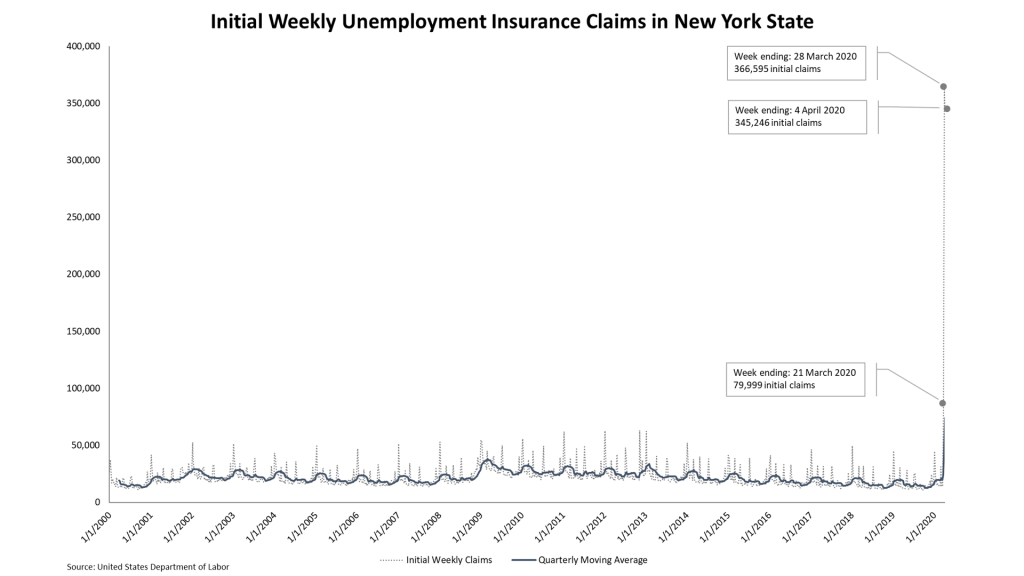Unprecedented COVID-19 Unemployment Claims (UPDATE 9 April 2020)
9 April 2020
According to data released today by the U.S. Department of Labor, the number of weekly unemployment claims filed across the U.S. fell by around 4% after reaching a record high of 6.8 million during the week ending 28 March. Despite this dip, the total number of claims filed during the week ending 4 April still exceeded 6.6 million—the second highest number on record, eclipsed only by last week’s totals. In other words, the pressure is far from off the already overloaded state Departments of Labor tasked with processing and approving claims.
In New York State, the drop in weekly claims was around 6%, from 366,595 during the week ending 28 March to 345,246 for the following week. Similar to the national situation, this number remains alarmingly high. Consider that, at this time last year, weekly unemployment claims hovered between 12,000 and 13,000.
The implication is, as it was last week, that unprecedented demands are being placed on the New York State (NYS) Department of Labor (DOL). While it is difficult to speak of “good news” during a global health crisis, over the past week New York Governor Andrew Cuomo and the NYS DOL have taken aggressive actions to increase the State’s capacity to meet these new demands. In particular, DOL partnered with Google to create a “new [web] interface system [that] should allow more people to sign up [for benefits] at one time, without crashing the website.” In addition, DOL has hired around 1,000 new workers since the start of the pandemic.
The bottom line is that, as historic numbers of New Yorkers face economic uncertainty and the possibility (and realities) of job and income loss, the State appears to be responding with swift and decisive action. Still, given the extraordinary magnitude of the challenge, backlogs and delays in processing claims seem inevitable. As such, local governments and mutual aid networks will continue to be relied on for supplement support and direct, real time assistance to those in need. Check the website of your local government, local foodbank, or local mutual aid network for information on how to donate to their coronavirus response efforts today.

